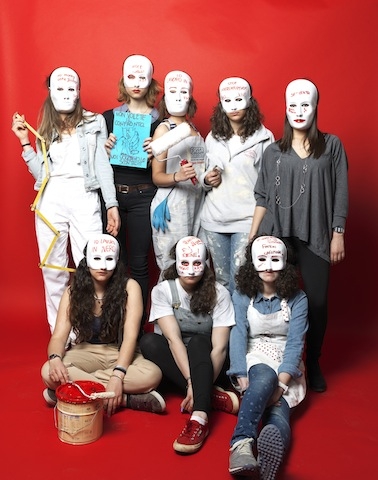Being a vocal proponent of anarchism and working in the contemporary arts is tough, not least for the constant contradictions and compromises such a position entails. The artworld is complicit with the political and financial mechanisms that the anarchist rails against. As such, any convincing representation of anarchist values requires that an artist deal with the contradictions of their own practice. It is her ability to do this that has convinced me of the strength of Adelita Husni-Bey’s research. The Libyan-Italian artist, who grew up between the UK, Italy and Libya, and is now based in New York, is capable of maintaining a fluid exchange between institutional and anti-institutional codes, while hollowing out a space for horizontal dialogue within hierarchical structures. Her workshops, plays and videos engage with notions of the institution and of legal and political processes, incorporating a light – yet hands-on – approach in order to place spectators and participants at the heart of legislative processes.
If Husni-Bey’s work seems somehow sullied by its connection to major art institutions, it is only because it points to the complicity of the artworld with the wider world it reflects and critiques
For example, her 2014 videowork Agency giochi di potere (Agency Power Games) – one of two currently displayed at Rome’s 16th Quadriennale – documents a three-day workshop undertaken in a secondary school, in which students were divided into five professional categories (journalists, politicians, workers, activists and bankers) in the context of an election campaign, as a means of analysing power relations in capitalist society. Aside from being a didactical stroke of genius, the work – first shown at Rome’s MAXXI museum in 2014 – by its critical nature asks crucial questions about the structure of the artworld and, shown in this context, of Rome’s controversial Quadriennale. (Indeed, the power games that can be seen at play between journalists, politicians and bankers are reflected in the internecine structure of the Quadriennale itself, which this time featured 11 curators who picked 99 artists to be featured in parallel themed group shows. Controversially, artists received no funding from the museum for the show, leading to an exhibition built on pacts between collectors, gallerists and artists.)
La luna in folle (The Neutral Moon, 2016) is a circular stage upon which three television sets sit. On each a debate is shown on loop, filmed respectively in the style of a political discussion, a reality show and a talkshow. Through these performed conversations, the work critiques the lottery of immigration law and the shallowness of political debate in the West in the post-truth era we are living. Yet the resounding question is how much difference such statements can make within the closed realm of the institutionalised contemporary art exhibition (the work is currently on show at MAXXI, for example). If Husni-Bey’s work seems somehow sullied by its connection to major art institutions, it is only because it points to the complicity of the artworld with the wider world it reflects and critiques. Of course, exposing the hypocrisy of institutional systems from within is a thankless task, which is itself subject to accusations of hypocrisy. It’s a tightrope walk that ‘political’ curators and artists are familiar with, though few manage it as well as Husni-Bey. This year will see her participate in the Italian Pavilion at the Venice Biennale, the biggest artworld stage, and institution, of all.
Husni-Bey is based in New York. Her work was recently shown at the Sursock Museum, Beirut, and in the 11th Gwangju Biennale. She is represented by Laveronica Arte Contemporanea, Modica (Sicily).
From the January & February 2017 issue, in association with K11 Foundation
